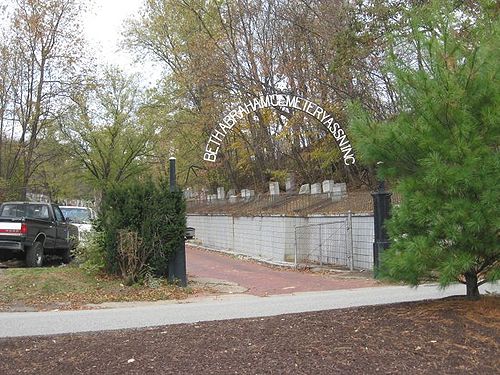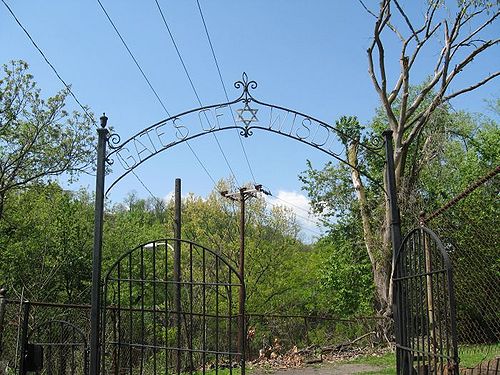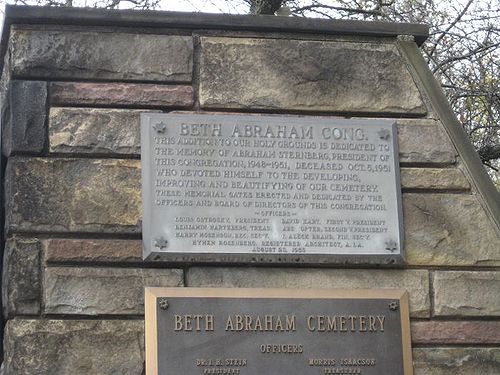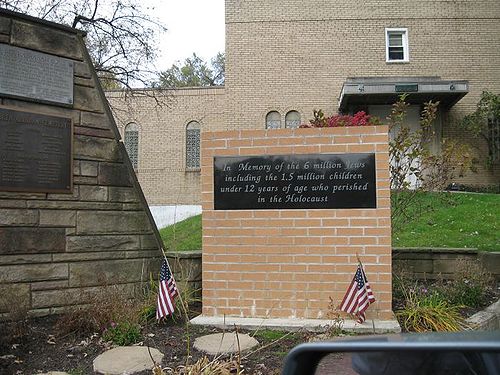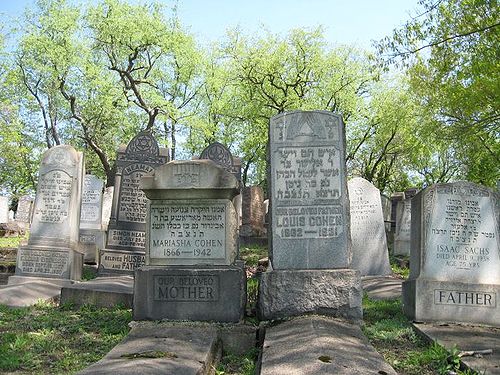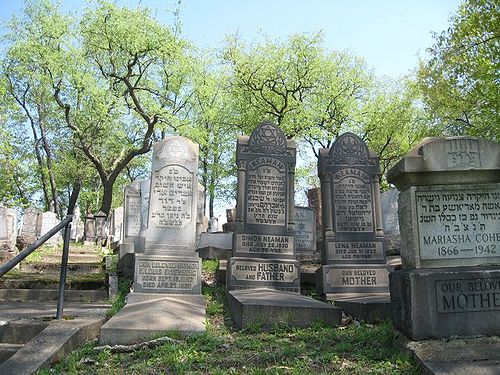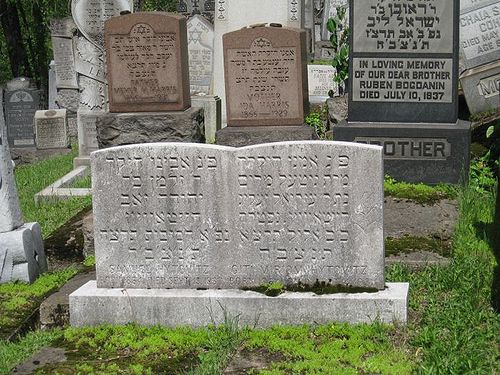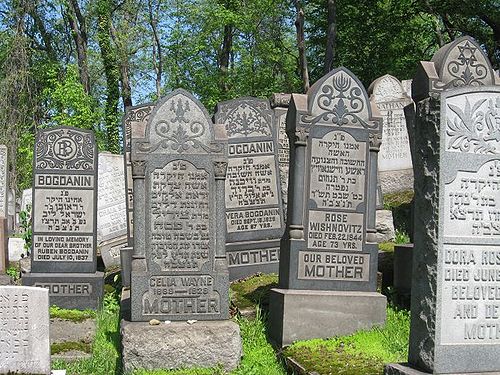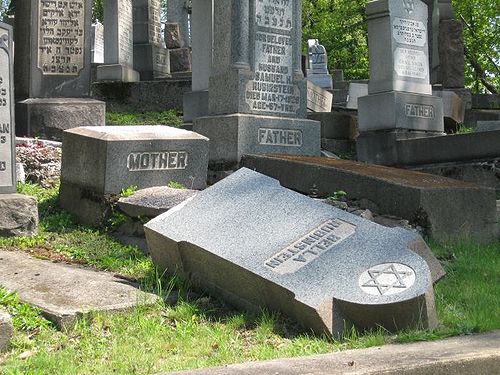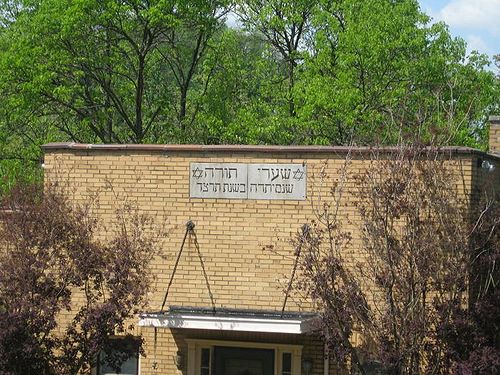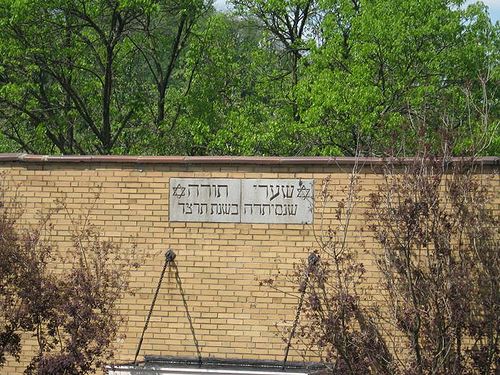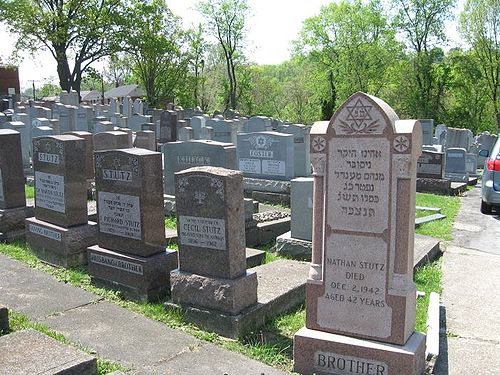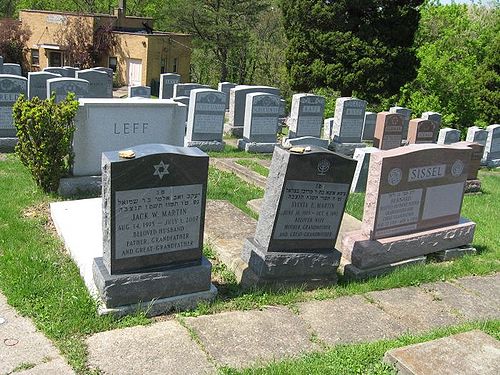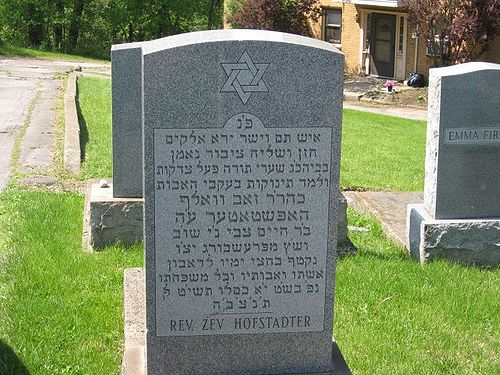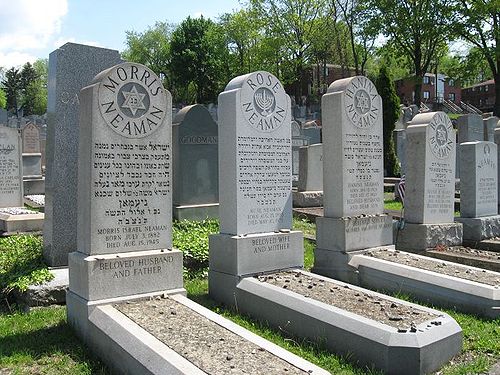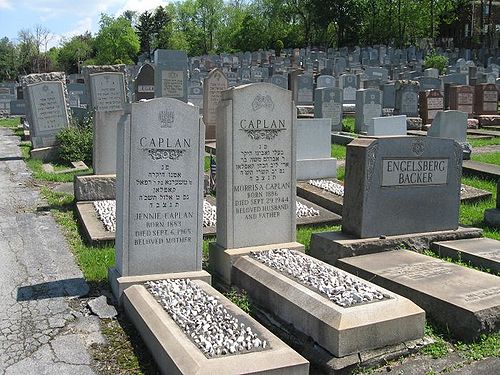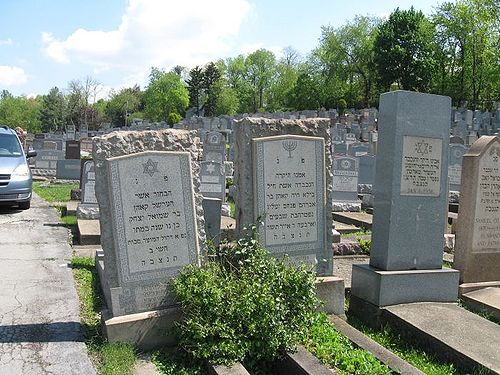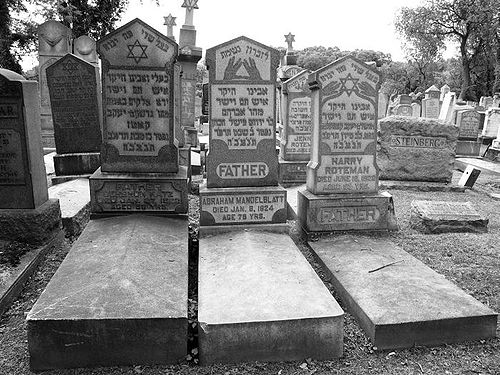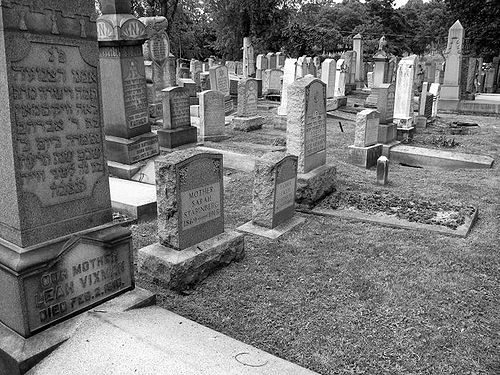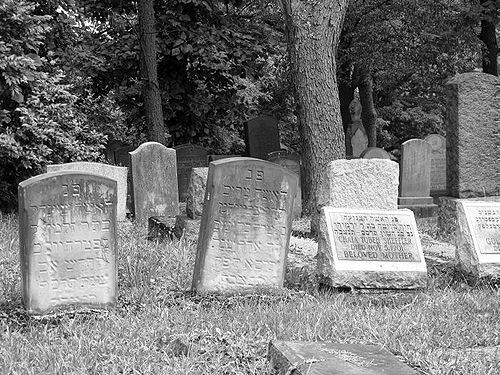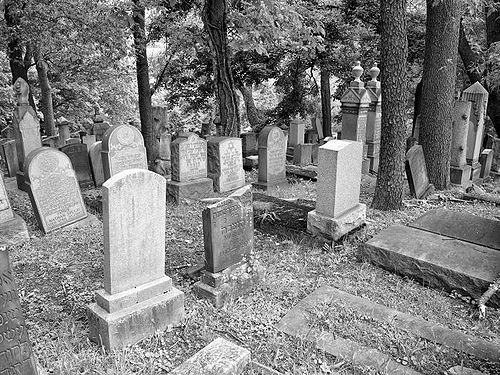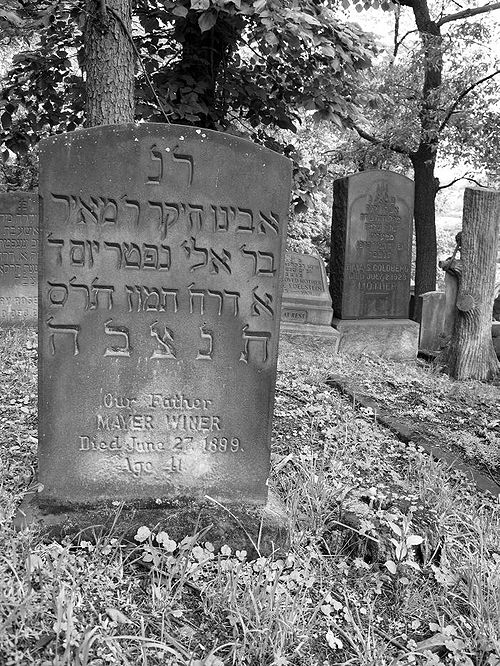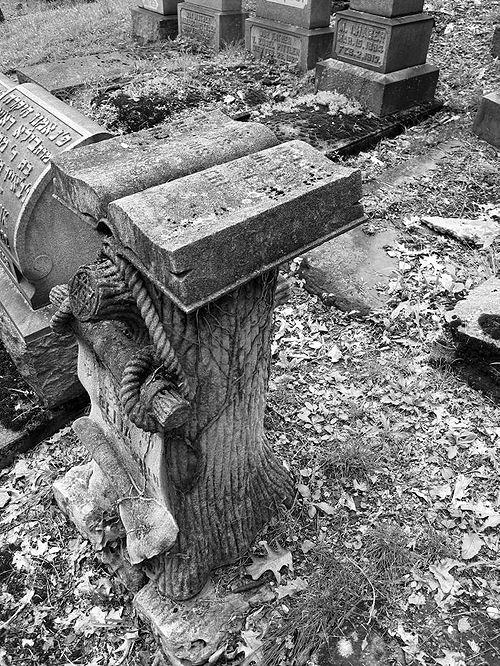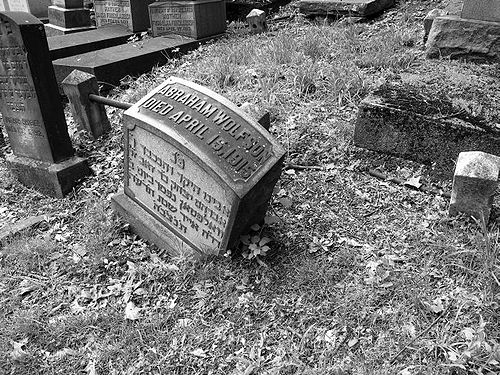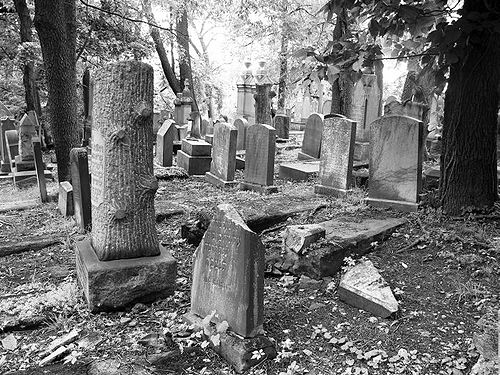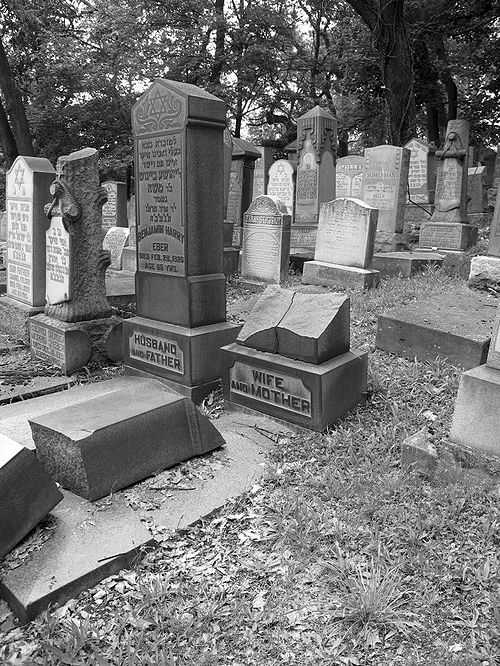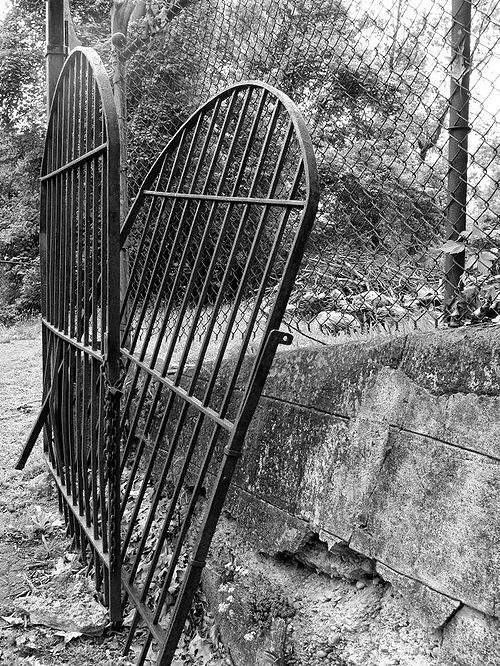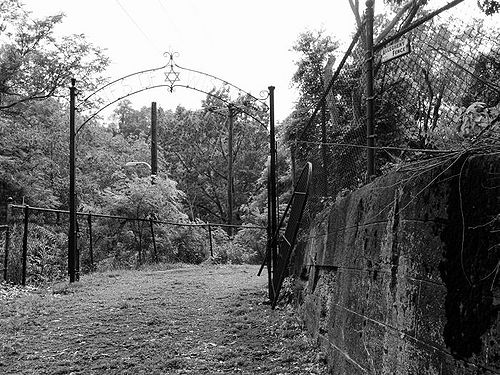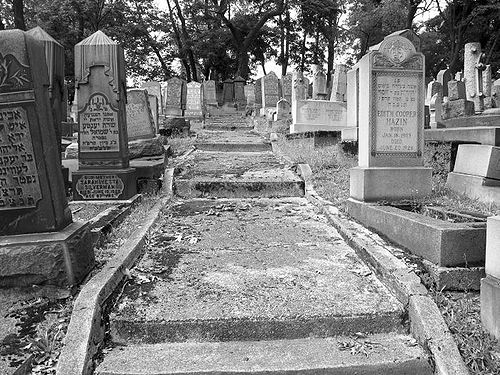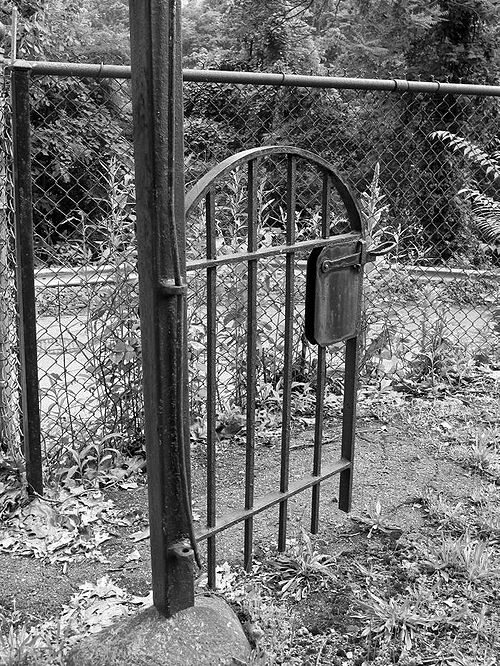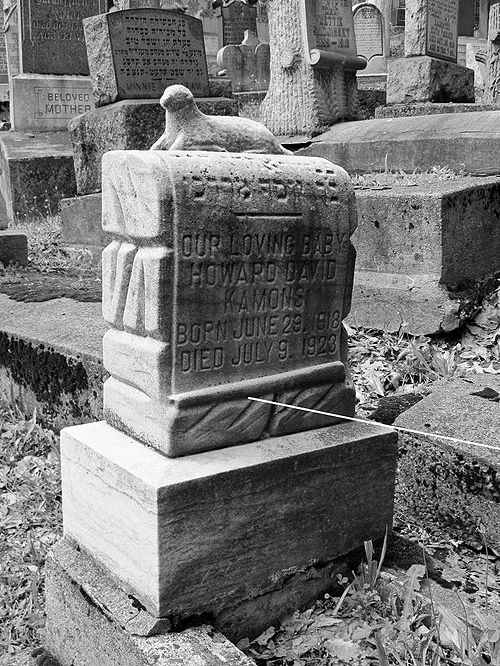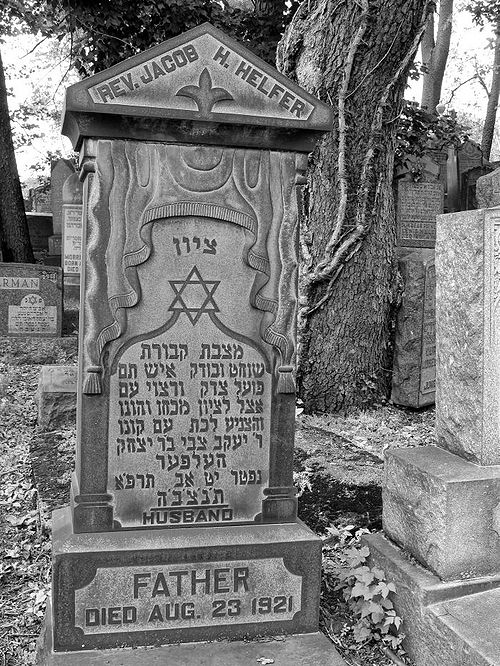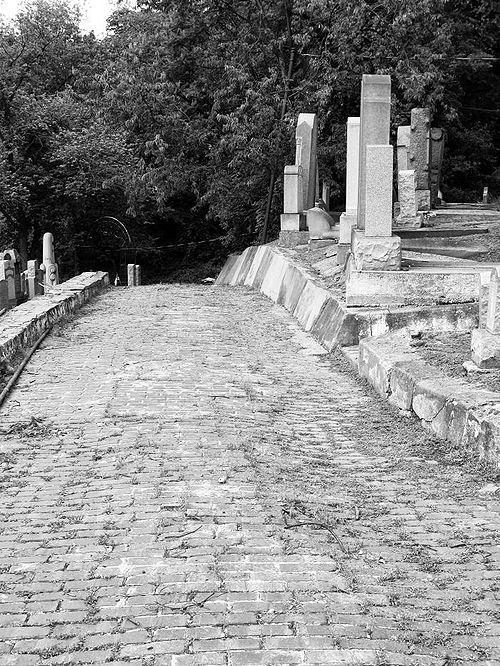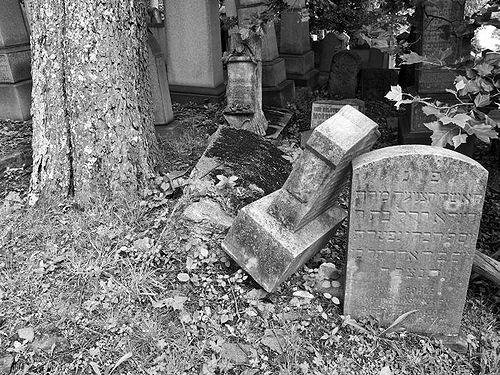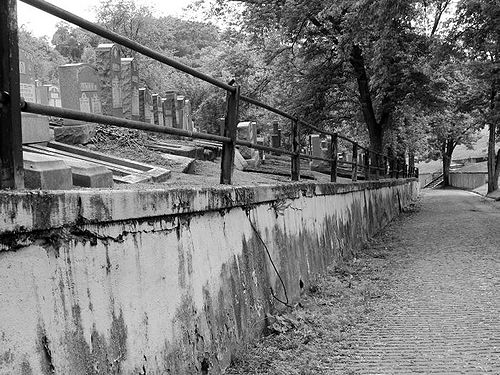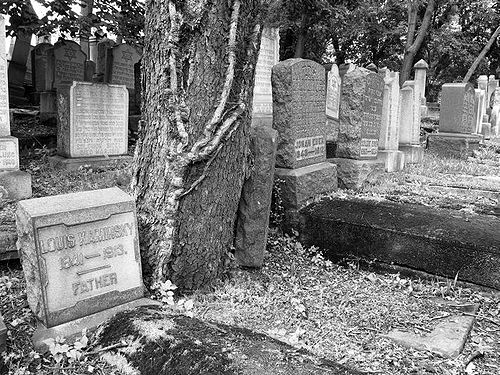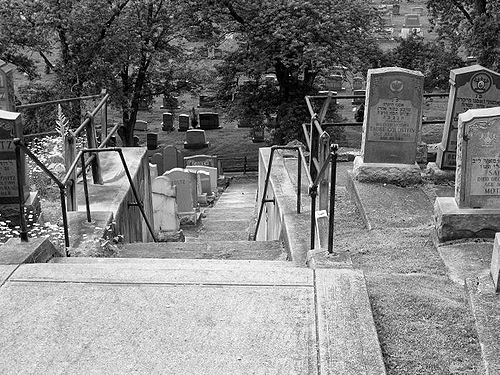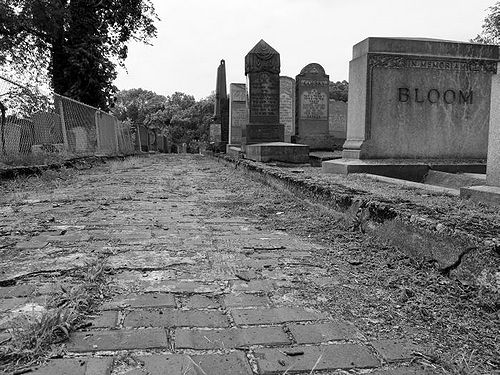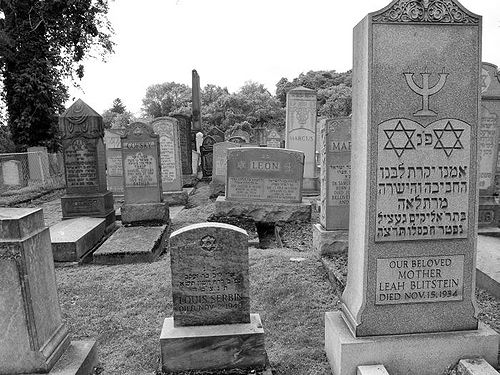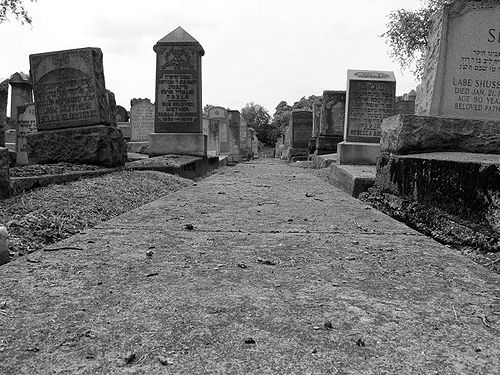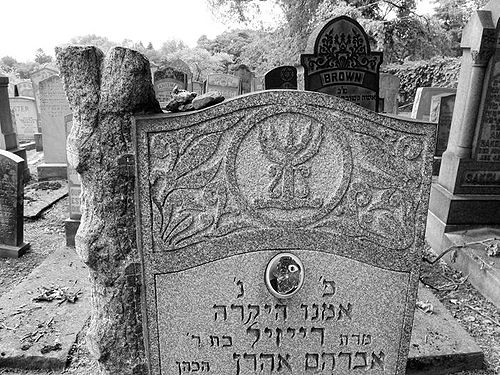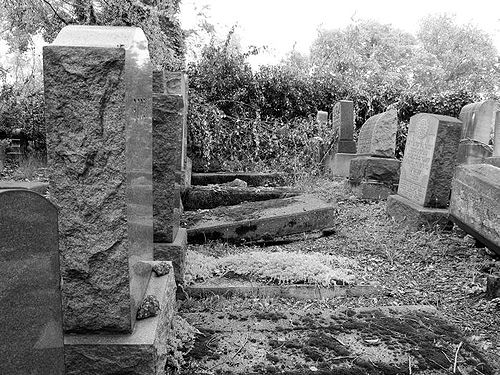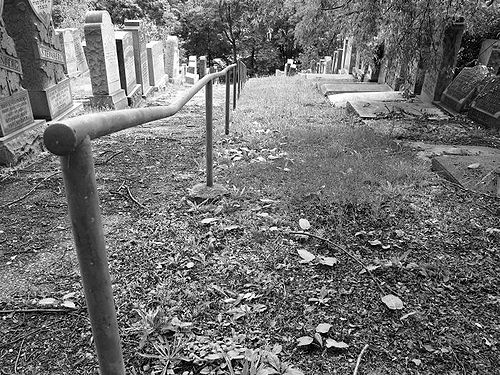Beth Abraham Cemetery
Beth Abraham Jewish Cemetery is located at the very edge of the Carrick/Overbrook border with Whitehall Borough in the southeast on Stewart Avenue, Pittsburgh, PA 15227. According to some accounts the cemetery was located here when the area was Baldwin Township and Jewish Cemeteries were forbidden to be located in the City of Pittsburgh. The cemetery is largely unknown and a mystery to many local residents who just pass in while negotiating the curve on lower Stewart Avenue.
The history of the cemetery is explained by Arlene Adelman, past president of the Beth Abraham Congregation/Cemetery, “The Polish, Romanian, and Spanish Jews all had their own synagogues in the Hill District. The Russian Jews built their Synagogue on Miller Street, it was called Beth Abraham. The Synagogue existed from the 1880s until the 1940s when the Jewish people began to move off the Hill.”
“Beth Abraham purchased plots of land next to each other at various times until they have what now exists in Carrick. The cemetery was incorporated in 1889. However, the first burial was actually in 1885. There is a very old baby section where still-borns and infants are buried. The cemetery follows the Jewish Orthodox tradition. It does not allow cremations. Approximately one year ago, the congregation handed over the care of the Cemetery to the Jewish Cemetery and Burial Association, which now takes care of nine Jewish cemeteries in the area.”
Several of the photos illustrate the ancient Jewish tradition of visitors placing small stones on the headstones. A tradition dating back centuries, stones were originally placed on the graves of the deceased to keep wild animals from disturbing the remains. As time passed on, and carved monuments became the preferred memorial, the custom of leaving a small visitation stone became a symbolic gesture–a way for the visitor to say of the loved one, “I remember you…”
The Carrick Overbrook Historical Society and the Carrick Library invites everyone to respectfully visit the cemetery, honoring those interned there. The tombstones are very interesting and mysteriously unique to most that are familiar with the many Christian cemeteries in our neighborhoods.
The Beth Abraham Cemetery is an active cemetery and is associated with the Beth Abraham Congregation in Squirrel Hill.
These are photos by John J. Rudiak
In the Spring of 2011 photographs of Devon Christopher Adams of Beth Abraham Cemetery were displayed at the Carrick Carnegie Library of Pittsburgh.
The Carrick Overbrook Historical Society, in conjunction with the Carrick Carnegie Library, displayed 28 black and white photos of the Beth Abraham Jewish Cemetery by Devon Christopher Adams. The cemetery is located on Stewart Avenue at the far end of the Carrick Overbrook neighborhoods. Mr. Adams’ photos of the Jewish Cemetery were taken in 2010 and are a beautiful example of the cemetery’s pathways and the artistic and interesting tombstones in both the newer and much older sections.
Devon Christopher Adams Biography
Photographer
Devon Christopher Adams is a Pittsburgh native who spent 25 years in the tri-state area before heading west after graduate school. He and his wife settled in Chandler, AZ where he teaches high school English and believes in photographing our history while it remains.
In 1994 I was a photography minor at Penn State. For my final portfolio during the semester I photographed cemeteries. My wife was my model, and the Beth Abraham Cemetery in Pittsburgh is one of the most unique cemeteries I'd been to at that time. The newer sections are very clean and well kept but the older sections (dated over a century ago) have character I've seen in few others. I reshot this cemetery 16 years later in the summer of 2010. Most of these photos represent that older section of the cemetery. Here is the only description I could find of the cemetery... "Beth Abraham Jewish Cemetery is located at the very edge of the Carrick/Overbrook border with Whitehall Borough in the southeast on Stewart Avenue, Pittsburgh, PA 15227. According to some accounts the cemetery was located here when the area was Baldwin Township and Jewish Cemeteries were forbidden to be located in the City of Pittsburgh."
He can be reached at devoncadams@gmail.com and all current photography can be viewed online at flickr.com/nooccar or by clicking here.
Jewish Cemetery
From Wikipedia, the free encyclopedia
A Jewish cemetery (Hebrew בית עלמין) ("beit alamin" or "beit kvarot") is a cemetery where members of the Jewish faith are buried in keeping with Jewish tradition. Known in Hebrew as "house of eternity," the land of the cemetery is considered holy and a special consecration ceremony takes place on its inauguration. Establishing a cemetery is one of the first priorities for a new Jewish community. A Jewish cemetery is generally purchased and supported with communal funds. History Early Jewish cemeteries were located outside of the city. In the Diaspora, it is traditional to bury the dead with the feet in the direction of Jerusalem. The tombstones usually have inscriptions in Hebrew and the regional language. During the Nazi Germany regime, Jewish cemeteries all over Europe were destroyed and desecrated. The largest Jewish cemeteries of Europe can be found in Budapest, Łódź, Prague, Warsaw and Berlin. Other Jewish cemeteries in Europe include the Jewish Cemetery in Khotyn. In the United States, the Coming Street Cemetery, in Charleston, South Carolina, Mikveh Israel Cemetery in Philadelphia, Pennsylvania, Hebrew Cemetery in Richmond, Virginia, B' Nai Israel Cemetery in Ashland, Wisconsin, and the Old Jewish Cemetery in Cincinnati, Ohio are some of the country's oldest Jewish cemeteries.
